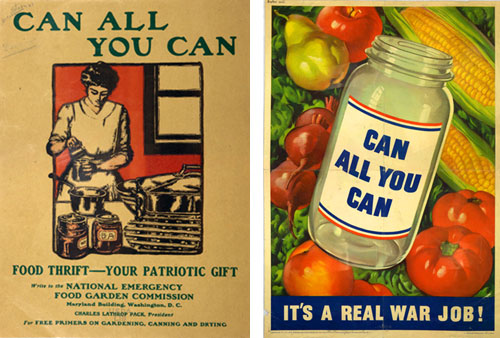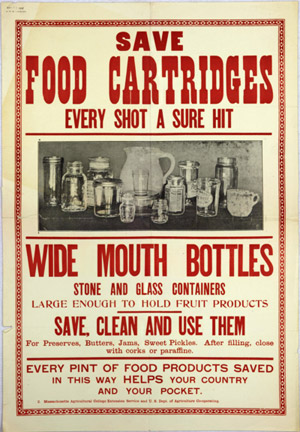Section 7 Image Gallery
Previous image |
Section Page | Next Image
Image 3 and 4
Can All You Can Poster Comparison:
Food Thrift— Your Patriotic Gift (WWI)
with
It's a Real War Job! (WWII)
and Save Food Cartridges (WWI)
By reinforcing gender norms in popular media, the homefront adopted a feminine persona, since the “real” front was overwhelmingly masculine. Such clear distinctions provided government administrators and advertisers with a defined homefront audience for whom clear messages could be created and disseminated during both wartimes.
Wartime food conservation and rationing functioned simultaneously to elevate women's status and to maintain gender hierarchies. In WWII, by taking the Home Front Pledge, women not only swore to make food matters part of their war zone, but as historian Amy Bentley claims, they also “implicitly acknowledged that food matters were women's work.” 32
Metaphorical war language, invoked to bestow wartime importance to women’s work, often revealed patronizing undertones. By declaring kitchens as battle stations or canning as "A REAL WAR JOB!" posters and other media adhered to mainstream assumptions about the appropriateness of certain types of work for women. If cooking and shopping were patriotic acts, then homefront contributions could be kept within the status quo of consumerism and consumption.
National Food Emergency Food Garden Commission, c.1917, Massachusetts Agricultural College Extension Service, c.1917
and OWI, c.1943.
Source: Special Collections, National Agricultural Library


